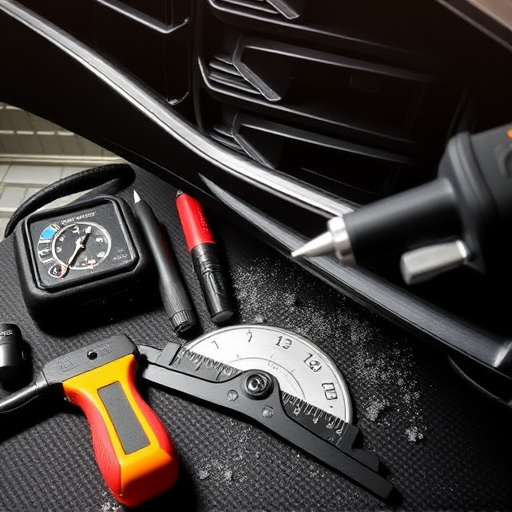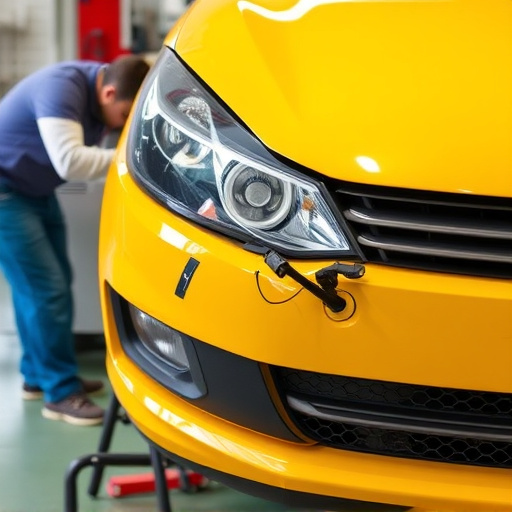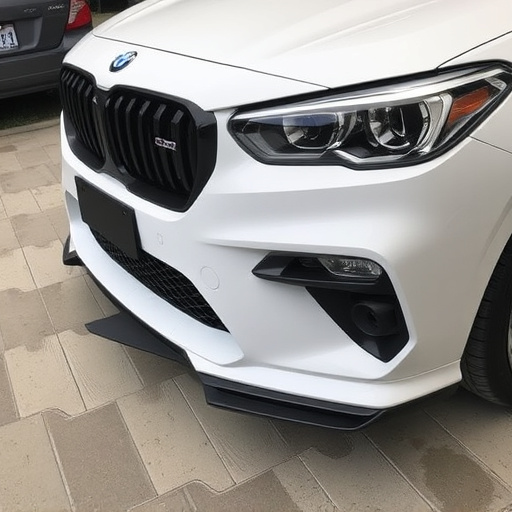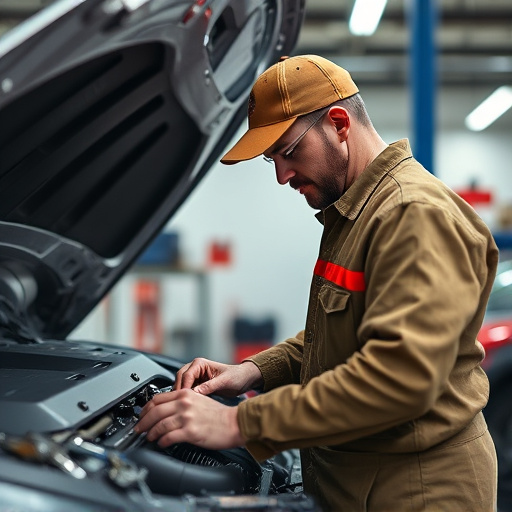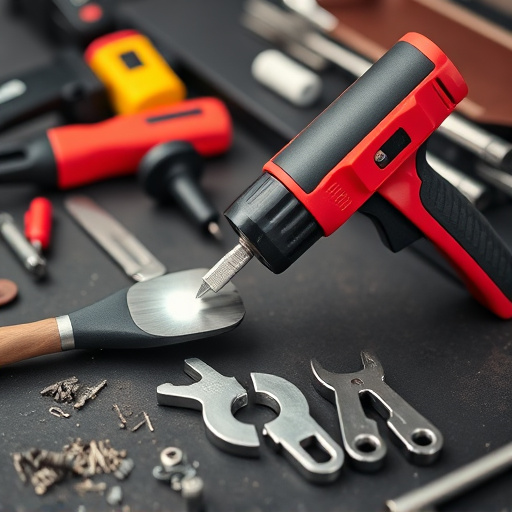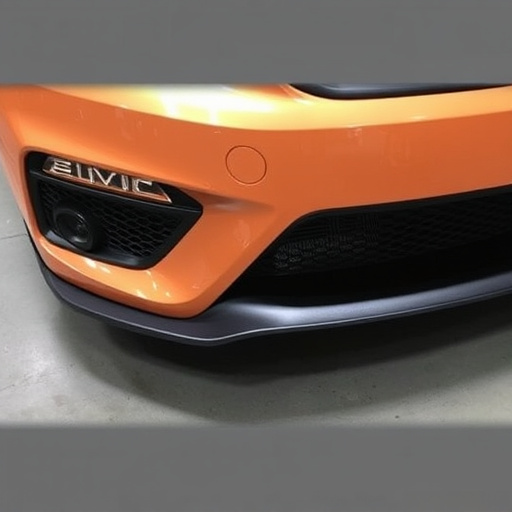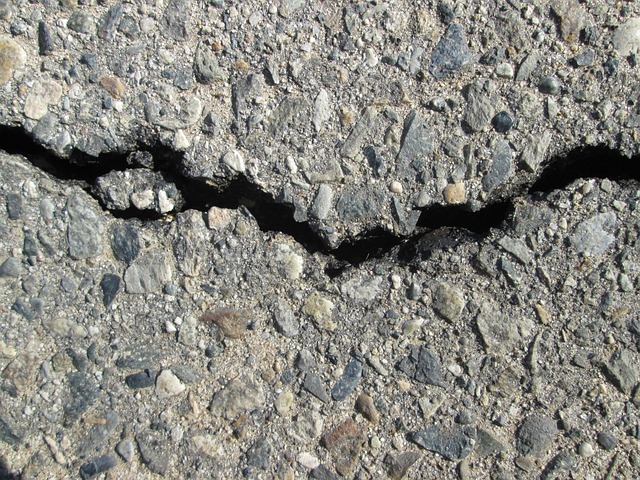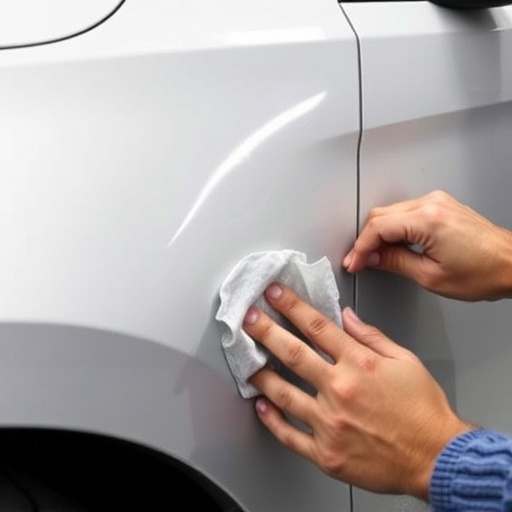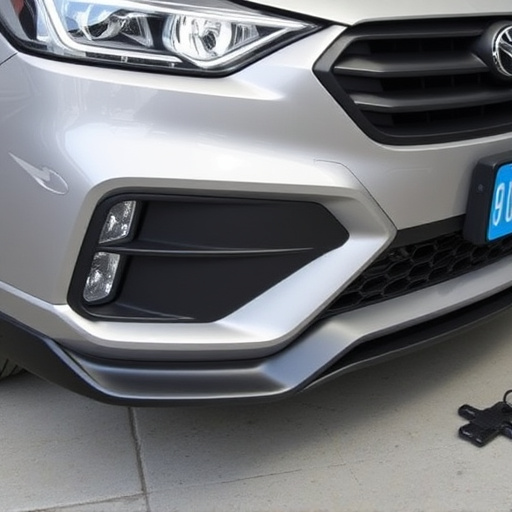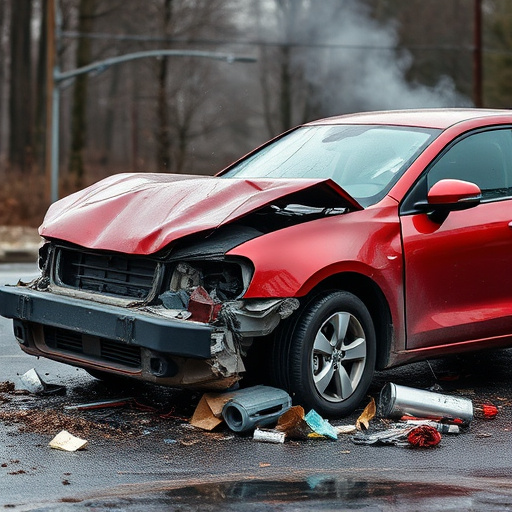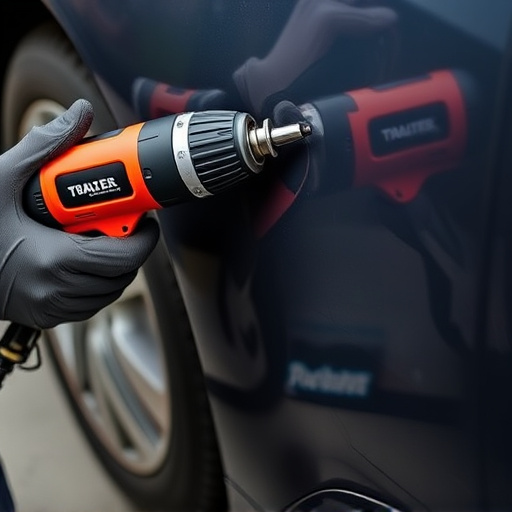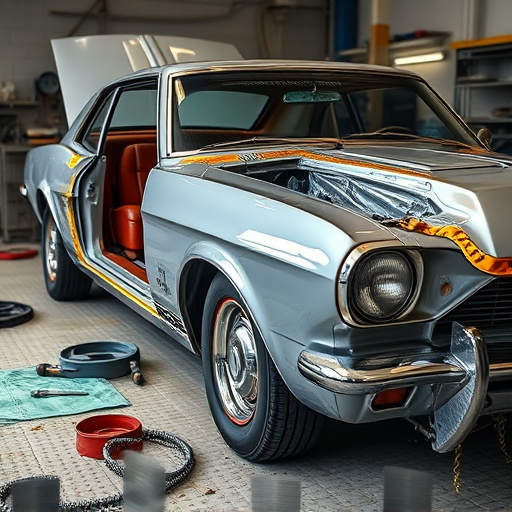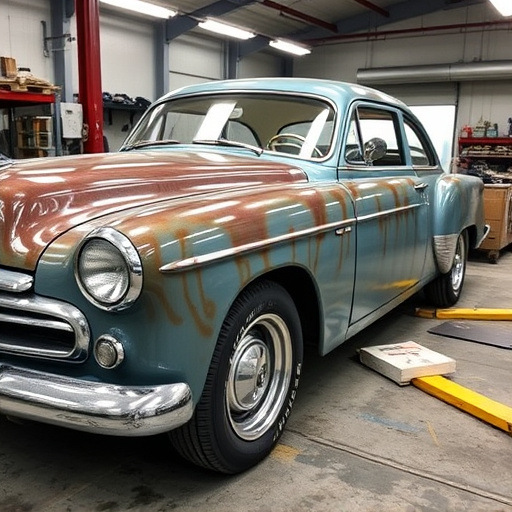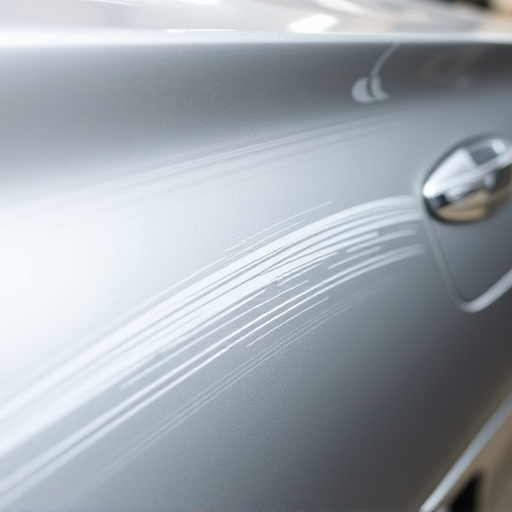Tesla carbon fiber repair requires skilled technicians to address composite material vulnerabilities like cracks and delaminations. A meticulous multi-step approach involving assessment, adhesives, resins, and layered reinforcement with carbon fiber sheets restores structural integrity and visual appeal. Preparation includes specialized tools, protective gear, and proper ventilation. The Layered Reinforcement Technique prioritizes both structural strength and aesthetic precision through strategic bonding of multiple composite layers.
“Discover the intricate process of repairing Tesla’s iconic carbon fiber panels with our comprehensive guide. From understanding the unique nature of carbon fiber damage to mastering the art of layered reinforcement, this article is your trusted companion for effective Tesla carbon fiber repair. We’ll walk you through the steps, from identifying issues to implementing a robust preparation routine and finally, the precise technique for reinforcing damaged areas. Armed with knowledge, restore your Tesla’s sleek and durable exterior.”
- Understanding Tesla Carbon Fiber Damage
- Preparation: Tools and Safety Measures
- Layered Reinforcement Technique Explained
Understanding Tesla Carbon Fiber Damage
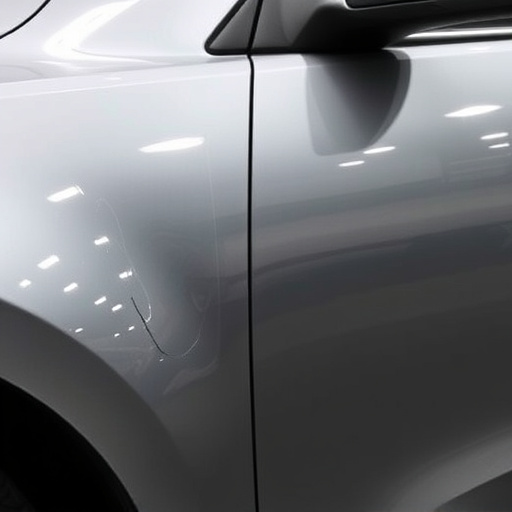
Carbon fiber damage on Tesla vehicles can present unique challenges for both owners and specialized auto body shops. Unlike traditional metal panels, carbon fiber composite materials are susceptible to specific types of deterioration over time. This includes cracks, delaminations (where the layers separate), and fiber exposure due to impacts or accidents. Recognizing these issues early is crucial as they not only affect the aesthetics but also the structural integrity of the vehicle.
When addressing Tesla carbon fiber repair, a multi-step approach involving layered reinforcement is often necessary. Skilled technicians assess the damage, ensuring that each layer of composite material—from the outer skin to the underlying matrix—is examined for weakness or separation. This meticulous process includes preparing the damaged area, applying specialized adhesives and resins, and layering reinforced materials like carbon fiber sheets or prepregs to rebuild and strengthen the composite structure, effectively restoring its structural soundness and visual appeal, much like a delicate restoration of an antique artwork in an auto body shop.
Preparation: Tools and Safety Measures
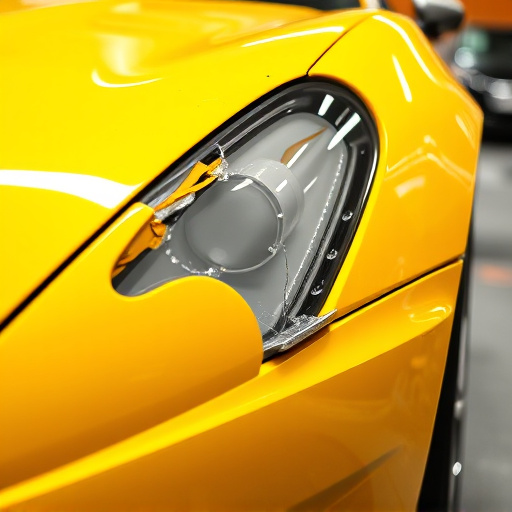
Before embarking on a Tesla carbon fiber repair, ensuring the right tools and safety precautions are in place is paramount. This involves gathering specialized equipment designed for intricate composite material work, such as carbon fiber-specific adhesives, resin systems, and hardeners. Protective gear, including gloves, goggles, and respirators, is also essential to safeguard against potential exposure to chemicals.
Proper ventilation is another critical aspect, especially when dealing with vehicle paint repair or collision repair processes that may generate harmful fumes. Creating a clean, well-ventilated workspace not only protects the repair technician but also ensures the longevity of the Tesla’s finish. Additionally, having access to detailed repair guides and, if available, fleet repair services, can streamline the process, ensuring every step aligns with Tesla’s exacting standards.
Layered Reinforcement Technique Explained
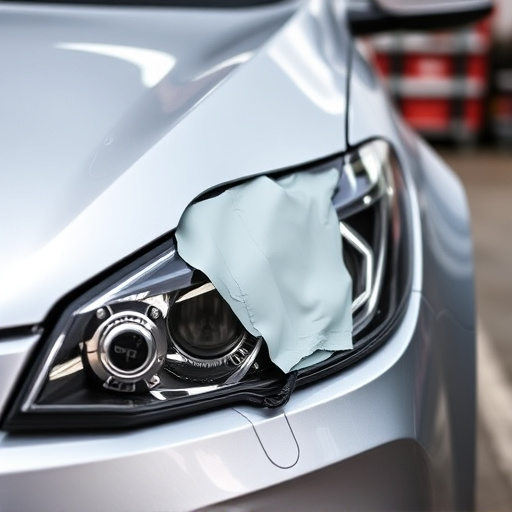
The Layered Reinforcement Technique is a specialized approach to Tesla carbon fiber repair, ensuring structural integrity and aesthetic precision. This method involves multiple layers of reinforcement material strategically applied over damaged areas. Each layer serves a unique purpose, first containing and stabilizing the affected section, then gradually building up strength and rigidity. This process mirrors nature’s own layered protection, where each barrier enhances the overall resilience.
For Tesla carbon fiber repair, this technique starts with an assessment to identify the extent of damage. Then, body shop experts carefully select and apply a combination of composite materials, often including carbon fiber sheets or prepregs, along with resins. Each layer is meticulously bonded, allowing for optimal strength while minimizing weight, crucial considerations in modern vehicle restoration and autobody repairs. This meticulous process not only fixes the visible damage but also reinforces the overall structure, making it a top choice among body shop services for high-performance vehicles like Teslas.
Tesla carbon fiber repair, particularly using the layered reinforcement technique, offers a comprehensive solution for addressing damage to these advanced materials. By understanding the specific steps involved, from preparation to application, this method ensures structural integrity and aesthetic restoration for Tesla vehicles. With proper care and expert execution, the layered reinforcement approach is an effective way to manage and prevent future carbon fiber damage, maintaining the vehicle’s value and sleek design.
